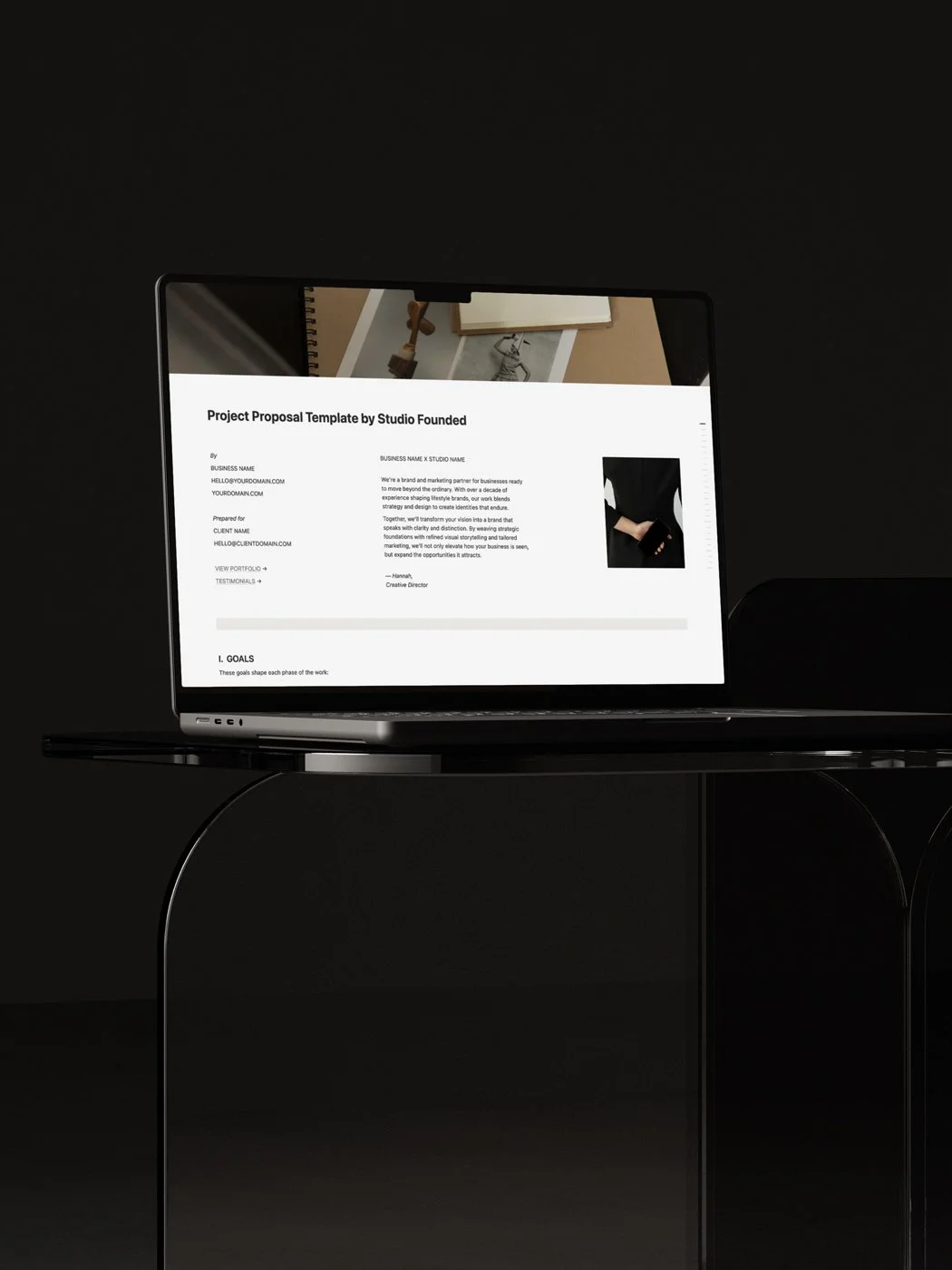Ready or Not: From Side Project to Full-Time Business
There’s a certain magic in the early days of a side project. It often starts as a quiet nudge, an idea you can’t shake. You find yourself working on it in the margins of your day: evenings spent chipping away at details, weekends filled with possibility. And slowly, it starts to grow.
If you’re here reading this, there’s a good chance that dream is starting to feel bigger. Maybe it’s not just something on the side anymore. Maybe it’s starting to feel like your next step.
Deciding to turn a side project into a full-time business is equal parts thrilling and vulnerable. It’s the kind of leap that doesn’t require perfection, but it does require clarity. You don’t need to have every answer. You just need to be willing to ask the right questions, and take thoughtful steps forward.
This page contains affiliate links, a unique URL which contains a tracking code. If you click on this link and purchase something, we receive a small commission, without any extra cost to you. We only recommend products and services we trust. You can find our affiliate disclosure here.
Get Honest About Your Numbers
Before you can run, you need something steady to land on. In business, that starts with your numbers.
For many of us, looking at the financial side of things can feel a little intimidating, especially when your business has lived mostly in the margins.
Take a close, honest look: What’s coming in each month from your side project? What are your expenses, both in your business and in your life? What would it actually take for this work to support you full time?
The numbers don’t have to be perfect, but they do need to be clear. That clarity gives you the information you need to make aligned decisions.
If the gap feels wider than you expected, that’s okay. You can adjust by raising your rates, refining your offers, or taking on a few more clients. The goal isn’t perfection. It’s building a foundation strong enough to grow on.
And one small but important step: keep your personal and business finances separate. It makes everything, from taxes to tracking your progress, much simpler.
Start by Defining Your Purpose
A business isn’t just a collection of products or services. It’s a reflection of what matters to you, shared in a way others can step into. So ask yourself: what story are you really inviting people into?
Before you scale or streamline, take a moment to root yourself in the why behind your work. What drives you to show up, even when it’s hard? Who are you here to serve? And how do you want people to feel after interacting with your business — clearer, comforted, inspired?
This kind of clarity becomes the heartbeat of your brand. It’s what turns a transaction into a connection, and a service into something meaningful.
If you’re unsure where to start, explore our blog post on Finding Your Brand Purpose with Brand Ikigai, a step-by-step guide to help you uncover the deeper purpose behind your work and shape a brand that feels aligned, authentic, and distinctly yours.
Building Systems That Support Your Work
There’s beauty in working for yourself. You get to decide how things are done, where your energy goes, what your days look like. But with that freedom comes the reality that you’re wearing every hat, from creative to customer support, marketing to money management. It can get overwhelming, fast.
That’s why building supportive systems is essential. Systems aren’t meant to box you in. They’re there to give your creativity structure. To hold the weight of your business, so you don’t have to carry it all on your own.
Start by simplifying
Begin by looking at where your time is going. Which tasks are you repeating every week? What parts of your workflow feel messy or unclear? Systems start with simplification. Streamlining the everyday so you can focus on the work only you can do. Templates are an easy entry point here. Think emails, proposals, client questionnaires, onboarding docs. If you’re writing it more than once, it probably deserves a template.
Automate what you can
Automation isn’t about removing the human touch — it’s about creating space. When you let tools handle the behind-the-scenes, you make more room for connection and creativity. Here are a few tools we reach for when it’s time to simplify the back-end chaos.
- Notion: Organize with workflows, task management, and knowledge sharing all in one place.
- FloDesk: Create and automate beautiful email campaigns that connect with your audience.
- Typeform: Interactive, user-friendly forms and surveys for client connection.
- Loom: Record personalized video messages that streamline your workflow.
Build a rhythm
There’s no one right way to structure your business. But there is a rhythm that’s right for you — one that supports your energy, honors your time, and helps your business grow without demanding every ounce of you in return. The systems you create now are the scaffolding that allows you to build something sustainable. So take your time. Start with what feels simple.
The goal is to create a rhythm that lets your business grow without consuming you and your time.
Know When to Ask for Help
There’s a point where you realize that doing it all is a fast-track to burnout. When certain tasks start draining your energy or pulling you away from the work that lights you up, that’s your cue to delegate. It might be a virtual assistant, a bookkeeper, a designer — someone whose zone of genius complements your own. Start small if you need to. The goal isn’t to hand off everything at once, but to free up space where it matters most.
In the beginning, it might feel daunting to invest in tools or support, but these investments are designed to create more space for your business to thrive. Think about it: the time you spend on administrative tasks, tasks that aren’t your expertise, could be better spent focusing on what you truly love and excel at.
If you’re unsure about taking the leap, ask yourself: what’s your time worth? By outsourcing some tasks, you create room for yourself to grow strategically and with intention, rather than feeling buried under the weight of a never-ending to-do list.
Start Before You’re Ready
There’s something no one tells you at the beginning: you may never feel completely ready.
There will always be one more detail to perfect, one more plan to map out, one more reason to wait. But the longer you wait for everything to feel certain, the longer you delay the momentum that comes from simply beginning.
Instead of waiting for a perfect moment, focus on being prepared enough. Ask yourself:
Have I taken time to understand what I need (financially, logistically, emotionally) to support this next step?
Do I believe in the value I bring, even if I’m still refining it?
Do I have simple systems that can carry some of the weight?
If the answer is yes, even imperfectly, it might be time to take the leap. Clarity rarely comes first. Most of the time, it shows up once you’ve started
When the Moment Comes
Taking your side project full-time isn’t about chasing someone else’s version of success. It’s about creating work that reflects who you are, how you want to show up, and what matters most. It’s about waking up and knowing, deep down, that the work you’re doing is meaningful. Not just for your clients or your customers, but for you.
It won’t always feel bold or cinematic. Sometimes, the moment to leap arrives quietly — on an ordinary morning, in a moment of stillness, with a sense that you're ready to choose your own path.
So when that moment comes, meet it with intention. Trust yourself. Celebrate every step — especially the small unglamorous ones that still move you forward. And remember: you’re not just building a business. You’re building a life.
Concluding Thoughts
There’s no single path to turning a side project into a full-time business. No perfect checklist, no universal moment when everything clicks into place. But there is a deeper knowing that what you’re building deserves more of your time, more of your energy, more of you.
This isn’t about rushing or forcing growth. It’s about honoring the dream you’ve been holding, and giving it the space it needs to grow.
So take your time. Trust your instincts. And remember that building a business isn’t just a professional move, but a personal one. It’s about crafting a life that feels aligned, spacious, and meaningful in the ways that matter most to you.
You may also like:
Crafting a Sustainable Brand Launch Strategy
Diversifying Your Income with Sales on Autopilot
Your Essential Website Launch Checklist




















